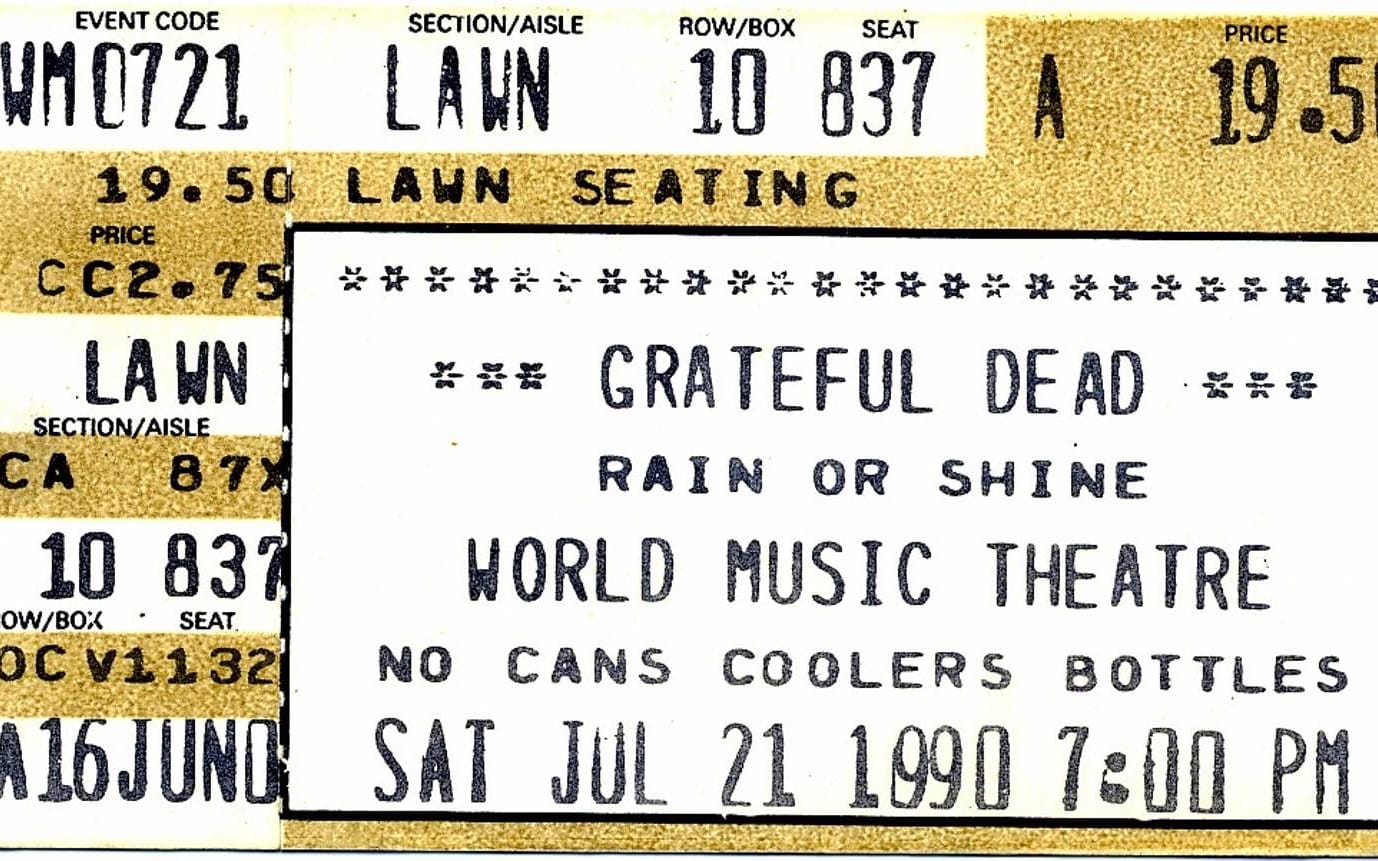This show was the first of a three night run to close out the Grateful Dead's 1990 Summer Tour.
The band was on a stellar, multi-year tear that began with the Spring East Coast Tour in 1987 but really found its legs throughout 1989. By Summer of 1990, the band was hot, and at a peak that the members themselves remember as one of their highest.
They were also hurtling towards a pretty big crisis, though when it hit it seemed they treated it as a mere bump in the road. That crisis was the death of keyboard player Brent Mydland, only a few days after this run of shows, from an accidental speedball overdose in his California home.
Brent died on July 26 and the band was back on stage for their Fall Tour on September 7. As if to underline just how important Brent had become to the band in his 11 years with them, it took two keyboard players to fill his shoes.
We, of course, knew nothing about any of this when the five or six of us piled into the car, leaving New Haven for the Chicago suburbs on July 20. If I recall correctly, we did the 16-hour trip more or less in one shot, taking turns at the wheel.
Something funny I remember about the drive out is that we were a little punchy in the final leg of the trip but got a second wind as we were leaving Ohio. The feeling was, "We're almost there!"
But we forgot about Indiana. You see, Indiana comes after Ohio and before Illinois. Fucking hippies.
We rolled into town a little crispy from the ride, but ready to go.
I left with tickets for only two of the three shows, the last two, but had little difficulty scoring for the first night. I have some memory of this being a fake ticket. I do know that I do not have any other Ticketmaster ticket stubs of this odd colour in my collection. I cannot remember now if the person who sold it to me told me it was fake, if I discovered that it was after seeing someone else's ticket or if the ticket-taker at the door told me and let me in anyway. This was all many braincells ago.
There are a lot of mixed opinions about this run of shows online. After reading through many fan posts and comments - and listening to a recording of this one again - I think I can discern why: these were not the most freeform or psychedelic Grateful Dead concerts, especially when compared to the high bar set over the previous 12 months. Instead, these were very, very solid, almost muscular performances, with a lot of fiery energy from the band members. I perceive it as a last big burst of enthusiasm before knowing they had some downtime coming. A sprint to the finish.
The last night of the run, July 23, gets most of the attention, being Brent's final show. A lot is made of the fact that the last words he sang on stage, during a cover of The Band's "The Weight", has him taking the line, "I gotta go but my friend's can stick around". Just one of those crazy things.
I managed to see a lot of excellent Grateful Dead shows in 1990, with and without Brent. But for sheer fun in the sun, this road trip to Chicago was hard to beat.
More:
Watch this show on the Grateful Dead's YouTube channel







Comments